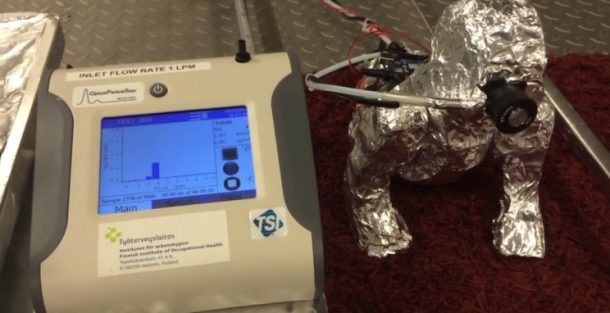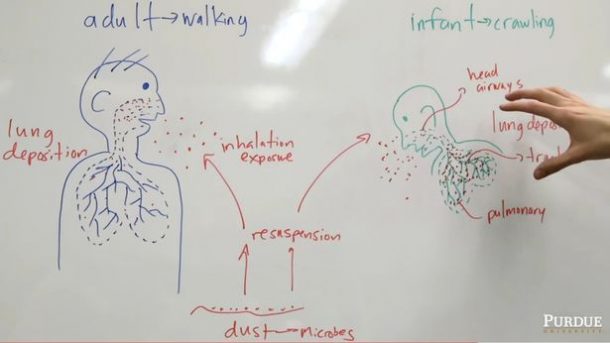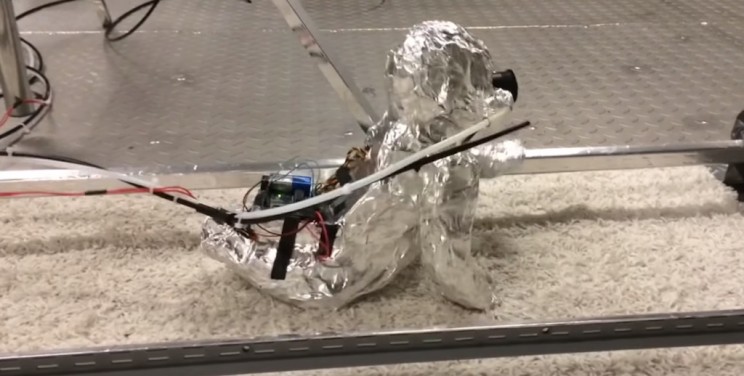Researchers are looking into the daily routine things to understand what a child deals with each day while he/she is crawling in the house. To better understand the situation, a baby like a robot was created by the researchers at the Purdue University. The baby robot crawls to different points that are designated by the researchers. As the robot starts crawling, it shows the stats to the researchers and helps them in understanding better the microbes that a child may be exposed to every day at his/her home.

In a recently published journal from Purdue University, the researchers have highlighted the kind and amount of the bio-gunk that a baby gets exposed to every day and is prone to inhale while they crawl around the house. When the baby crawls across the living room of his/her home, they get exposed to dirt, skin cells, bacteria, pollen and any biomatter from the home. The dirt that they inhale goes directly to the baby’s lungs. The baby robot created by Purdue helps understanding how much gunk a child inhales and how it affects him/her. However, in some ways, this bio gunk is also important for a child’s growth.
Brandon Boor, the lead researcher described the goals of the research says, “We are interested in the biological material an infant inhales, especially during their first year of life when they are crawling. Many studies have shown that inhalation exposure to microbes and allergen-carrying particles in that portion of life plays a significant role in both the development of and protection from, asthma and allergic diseases.”
The baby robot crawls on different carpets that are common in the houses all around the world. As the robot inhales the particles on the carpet, the particles are measured that are hovering in the breathing zone of the baby. They showed that the baby robot is continuously exposed to a cloud of suspended particles as it crawls around the room. But those same particles also have health benefits for the child. These particles enhance the immunity of the child against several allergies in the long term. It also lowers the chances of asthma in babies.

The research will continue to highlight more aspects of the microbes and how they affect babies in early childhood. This will not only explain the reason behind many diseases that the babies get but also tell about the beneficial microbes that a baby needs to boost his/her immune system.


